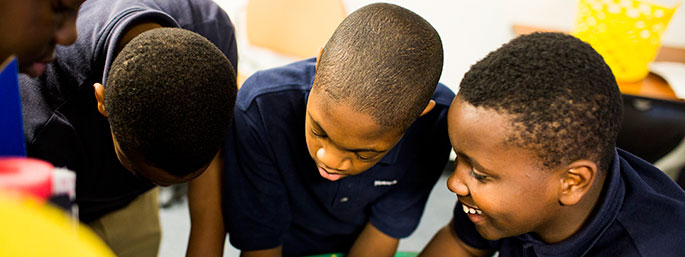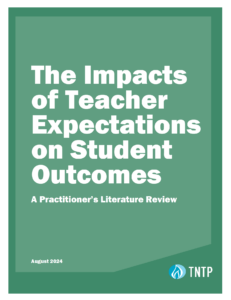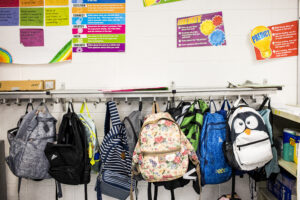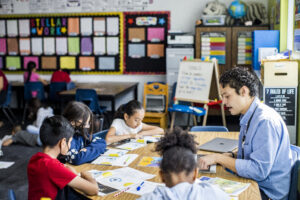My job is to make teachers better. In Bridgeport, Connecticut, where I am based, a big part of my job is visiting teachers’ classrooms and helping their principals or coaches think about how best to help them improve. It’s exciting work—as a former teacher myself, I know how important it is to get a new perspective on how you and your students are doing, and how you could be doing even better. And it’s rewarding, too, especially when I walk into joyful, high-achieving classrooms. Sometimes, it makes me wish I was a student again.
But what does great teaching look like? Over the years, I’ve come up with a “cheat sheet” to help identify excellence in action. A few provisos: Yes, individual teachers have their own styles, and it’s important to look at student work to gauge teacher success. But nonetheless, there is some important information about a teacher’s effectiveness anyone—parents, fellow teachers and school leaders—can glean right away from a careful classroom visit. Here’s an example.
Last month, I visited a ninth-grade social studies class. When I arrived, the classroom was already abuzz. The students’ assignment was to write an essay describing the Black Death and its effects on Medieval Europe, including a comparison of how different religious groups explained and coped with the plague. Everyone was working independently, some furiously typing away and others skimming primary and secondary source documents.
As they worked, the teacher circulated throughout the room, checking in with students who had their yellow or red cards out on their desk—a silent signal that they needed help. She gave them feedback on everything from the accuracy of their statements (“Be careful that you’re not saying things that they thought as things that actually were.”) to their word choice (“Would it make a bigger impact to say one-third of the population or hundreds and thousands of people?”). As she moved around the room, each student took her feedback and dug right back into his or her essay.
Now you’re thinking, “Sounds great, but what does it look like in a kindergarten classroom? Or a middle school math class? How many of the teacher's practices are applicable in other settings?”
Fortunately, there are certain things that we see consistently across effective teachers’ classrooms, and you can usually find them (or find out that they aren’t happening) by looking at what students are doing. From an observer’s perspective, what you see from the students can give you even more information about the teaching in the room than the teacher’s actions do.
So here it is: my back-of-the-hand scorecard. Here are five signs that you’re watching great teaching:
AMBITIOUS GOALS: Is the class focused on a clear learning goal?
In this class, students knew exactly what they were doing. They had spent classes leading up to this day reading, discussing and analyzing various texts in order to understand the time period. This was their opportunity to demonstrate all that they had learned—both knowledge and skills—and it was clear that the bar had been set high.
FULL PARTICIPATION: Are all students participating?
These students were all working independently but they didn’t have to stop when they encountered a road block. Instead, they used a simple card system to signal for help, putting out a yellow card and continuing their work, or using a red card if they were really stuck—which shows that not only has the teacher set clear expectations for how students should manage uncertainty but she’s also built a classroom culture where everybody follows those expectations without reminders. And the teacher would quickly move from student to student to ensure that they were all able to keep working.
HARD WORK: Are students on task and thinking with care?
The students were reading, writing and thinking deeply throughout the lesson. Their assignment required knowledge of the time period and varied religious perspectives, in addition to literacy skills including analyzing information from quality texts and synthesizing learning into well-written essays. If I had heard a lot of chatter or students asking lazy questions that indicated they weren’t really engaged, that would have been a red flag. But this group was on task and committed to communicating their learning in the most effective way.
FAST PACE: Is nearly all of the class time used for learning activities?
I showed up a few minutes after class began and students were already working. And students worked up until the last possible minute.
FUN: Is there a buzz of positive energy in the room?
There was an appropriate sense of independence for high schoolers. Students approached their research and writing in different ways, and were free to do what they needed to flourish. Interactions among students and between the teacher and students (even during the occasional reminder about expectations) contained smiles and laughter. In short, it was a class I would like to attend, or send my own kids to.
Not every effective classroom looks the same—and neither does every engaged student. But when you’re visiting an effective classroom, you’ll find some sense of each of those five qualities. When I see all five in place, I can be pretty sure that I’m also going to see students who are making strides and meeting ambitious goals.








